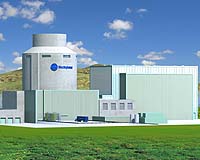 |
Vienna (AFP) Nov 27, 2009 The International Atomic Energy Agency on Friday announced an agreement to help African nations battle the tsetse fly, the main carrier of parasites that causes sleeping sickness with its bites. The IAEA, which has been working on the problem with African countries for 30 years, can make available a Sterile Insect Technique (SIT), a nuclear-based pest control technology that is often described as "biological birth control for insects", according to the agency's website. The IAEA signed a memorandum of understanding on Wednesday with the African Union, extending cooperation in a range of domains. Work on sleeping sickness follows an effective trial in Zanzibar in the late 1990s. Sleeping sickness, or trypanosomosis in animals, is a deadly disease found in 35 African countries, where it kills 400,000 people a year, along with some three million head of cattle. Apart from the cost in lives, the disease is seen as a major obstacle to development, causing an estimated loss in earnings of about four billion dollars (2.7 billion euros) a year. "In SIT-supported pest suppression and prevention campaigns, millions of sterilized male insects are released into targeted areas. They mate with wild females in the field, but no offspring are produced. Eventually, the pest population is suppressed and steadily reduced over time," the IAEA explained. Medical cooperation is part of the brief of the IAEA, which is based in Vienna and is responsible for promoting peaceful uses of atomic energy. Share This Article With Planet Earth
Related Links Nuclear Power News - Nuclear Science, Nuclear Technology Powering The World in the 21st Century at Energy-Daily.com
 British nuclear watchdog issues concerns on reactors
British nuclear watchdog issues concerns on reactorsLondon (AFP) Nov 27, 2009 Britain's nuclear safety watchdog has warned that French and US-Japanese reactors planned for construction in Britain could be rejected unless safety concerns were met. The Health and Safety Executive said it has some concerns about features of both designs of the reactor technologies, proposed for use in a new generation of British nuclear power stations. "We continue to believe that ... read more |
|
| The content herein, unless otherwise known to be public domain, are Copyright 1995-2009 - SpaceDaily. AFP and UPI Wire Stories are copyright Agence France-Presse and United Press International. ESA Portal Reports are copyright European Space Agency. All NASA sourced material is public domain. Additional copyrights may apply in whole or part to other bona fide parties. Advertising does not imply endorsement,agreement or approval of any opinions, statements or information provided by SpaceDaily on any Web page published or hosted by SpaceDaily. Privacy Statement |